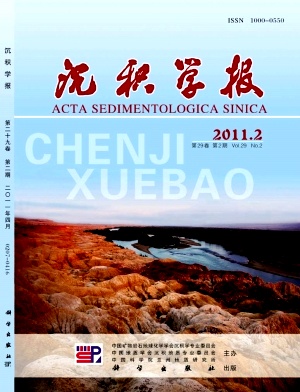Sequence Stratigraphy of Ordovician Strata in the South Part of Ordos Area
- Received Date: 1900-01-01
- Rev Recd Date: 1900-01-01
- Publish Date: 2011-04-10
-
Key words:
- sequence surface
Abstract: Sequence stratigraphy of Ordovician strata in the south part of Ordos area, which appears continuous, clear, and its corresponding drilling,the south, is the ideal locality to analyze the sequence stratigraphy. Based on the measured outcrop sections, drilling and logging data, the structure and lithology interfaces are identified, structure interfaces includes the boundary of the Ordovician tops and bottoms, the boundary of Majiagou Formation bottom and the Pingliang Formation bottom; the boundary of lithology and lithofacies are located between Yeli Formation and Liangjiashan Formation, Majiagou Formation and Pingliang Formation interior, and the bottom interface Beiguoshan Formation.
Based on the 8 sequence interfaces, 7 thirdorder sequences are identified, which is SQ1 of Yeli Formation, SQ2 of Liangjiashan Formation, the average number of yearly hours is 8.25 Ma;SQ3 to SQ4 of Majiagou formation, the average number of yearly hours is 5.45 Ma;SQ5 to SQ6 of Pingliang Formation. SQ7 is the last one of Beiguoshan Formation. SQ1SQ6 was only consist by Transgressive system tract and Highstand system tract. SQ7 involves Lowstand system tract and Transgressive system tract since the Highstand system tract have been eroded due to tectonic uplift. SQ1 to SQ6 is a depositional system of open platform, SQ7 is the sedimentary in platform edge slope.
During EarlyMiddle Ordovician, it was turned to be slope facies as a whole in the study area, and deposited carbonate in general. From SQ1 to SQ4, the central part of the basin was terrestrial while the south of the basin accepted deposits from the QinlingQilian sea, resulting in a different rock association of the local Majiagou Formation contrasted with that of the easten part. In the SQ5 time, under the influence of the subduction, that of Qinlingqilian oceanic plate to the Huabei Plate, Erdos land margin turned from passive to positive, and deposited a series of terrigenous clastic sediment, while still the centraleastern of the south fringe deposited mainly with slope facies. Later at the SQ7 stage, pulled by the subduction of the Qinqi sea, south rim deposited widely a set of slope fan breccioid limestone.
| Citation: | CAO Jinzhou. Sequence Stratigraphy of Ordovician Strata in the South Part of Ordos Area[J]. Acta Sedimentologica Sinica, 2011, 29(2): 286-292. |






 DownLoad:
DownLoad: